TESTOSTERONE
TESTOSTERONE
WHY CHOOSE
SIMPLY HORMONE?
WHY CHOOSE
SIMPLY HORMONE?
Patients prefer the pain-free, non-invasive, and ease-of-use saliva testing offers. Unlike blood testing, hormone testing using saliva is not only easy and pain-free, it also has the unique ability through sensitive molecular testing to accurately measure the current bioavailable amount of hormone available to your body’s target tissues. For this reason, saliva testing better relates to specific symptoms of excess and deficiency.
- Saliva testing is a consistent, highly accurate, & dependable method for measuring free testosterone levels.¹
- Saliva can be used in a clinical setting to diagnose and monitor treatment of hormonal disorders.²
- SimplyTest saliva sample preservation buffer increases test precision, accuracy, and assay reproducibility.³
- Saliva collection avoids the stress impact a blood draw can have on hormone levels.
- Reports demonstrate an increase in overall test participation & ongoing compliance with frequent testing regimens when saliva is offered.⁴
[1] Keevil, B. G., MacDonald, P., Macdowall, W., Lee, D. M., Wu, F. C., & NATSAL Team (2014). Salivary testosterone measurement by liquid chromatography tandem mass spectrometry in adult males and females. Annals of clinical biochemistry, 51(Pt 3), 368–378. https://doi.org/10.1177/0004563213506412[2] Hammerich, K. H., Donahue, T. F., Rosner, I. L., Cullen, J., Kuo, H. C., Hurwitz, L., Chen, Y., Bernstein, M., Coleman, J., Danila, D. C., & Metwalli, A. R. (2017). Alkaline phosphatase velocity predicts overall survival and bone metastasis in patients with castration-resistant prostate cancer. Urologic oncology, 35(7), 460.e21–460.e28. https://doi.org/10.1016/j.urolonc.2017.02.001[3] Alimetrix 2023, Testosterone Assay Validation Summary[4] Dhima, M., Salinas, T. J., Wermers, R. A., Weaver, A. L., & Koka, S. (2013). Preference changes of adult outpatients for giving saliva, urine and blood for clinical testing after actual sample collection. Journal of prosthodontic research, 57(1), 51–56. https://doi.org/10.1016/j.jpor.2012.09.004


Hormones exist in delicate harmony with one another—partners in an important and intricate balancing act.
When levels are in balance, body systems are generally stable. When levels fall out of balance, normal function may be disrupted. Knowing the signs, understanding the symptoms, and testing helps to support and maintain a normal, healthy, and directed hormonal balance as well as help keep other possible chronic disorders and diseases at bay.
Hormones exist in delicate harmony with one another—partners in an important and intricate balancing act.
When levels are in balance, body systems are generally stable. When levels fall out of balance, normal function may be disrupted. Knowing the signs, understanding the symptoms, and testing helps to support and maintain a normal, healthy, and directed hormonal balance as well as help keep other possible chronic disorders and diseases at bay.
What is testosterone?
Testosterone is a sex hormone
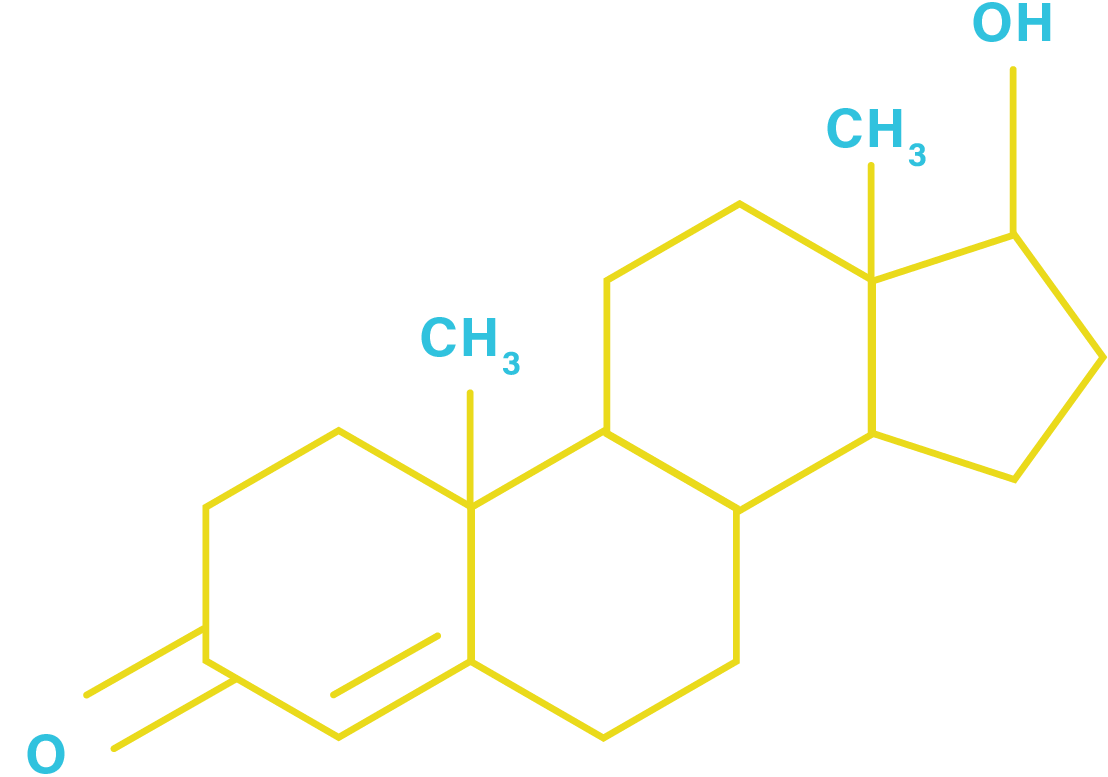
Testosterone is a hormone produced by the male and female reproductive organs and adrenal glands. It is essential for the development of sexual characteristics, including muscle mass and bone density. It also plays a critical role in the formation of male reproductive organs such as the testes and prostate gland.1
Testosterone production is controlled by the Pituitary Gland

Testosterone Production Starts in the Brain. The pituitary gland, a small gland at the base of the brain, controls testosterone production. It sends signals to the testes to make testosterone. The hormone then circulates through the bloodstream to the entire body.2
What is testosterone?
Testosterone is a sex hormone

Testosterone is a hormone produced by the male and female reproductive organs and adrenal glands. It is essential for the development of sexual characteristics, including muscle mass and bone density. It also plays a critical role in the formation of male reproductive organs such as the testes and prostate gland.1
Testosterone production is controlled by the Pituitary Gland

Testosterone Production Starts in the Brain. The pituitary gland, a small gland at the base of the brain, controls testosterone production. It sends signals to the testes to make testosterone. The hormone then circulates through the bloodstream to the entire body.2
Should I monitor testosterone levels after the initial report?

To identify potential imbalances and to determine how effective hormonal treatment is, testosterone levels should be monitored. This should be done typically every three to six months. This ensures that the levels are within the desired range.6
Should I monitor testosterone levels after the initial report?

To identify potential imbalances and to determine how effective hormonal treatment is, testosterone levels should be monitored. This should be done typically every three to six months. This ensures that the levels are within the desired range.6
How are testosterone levels tested?
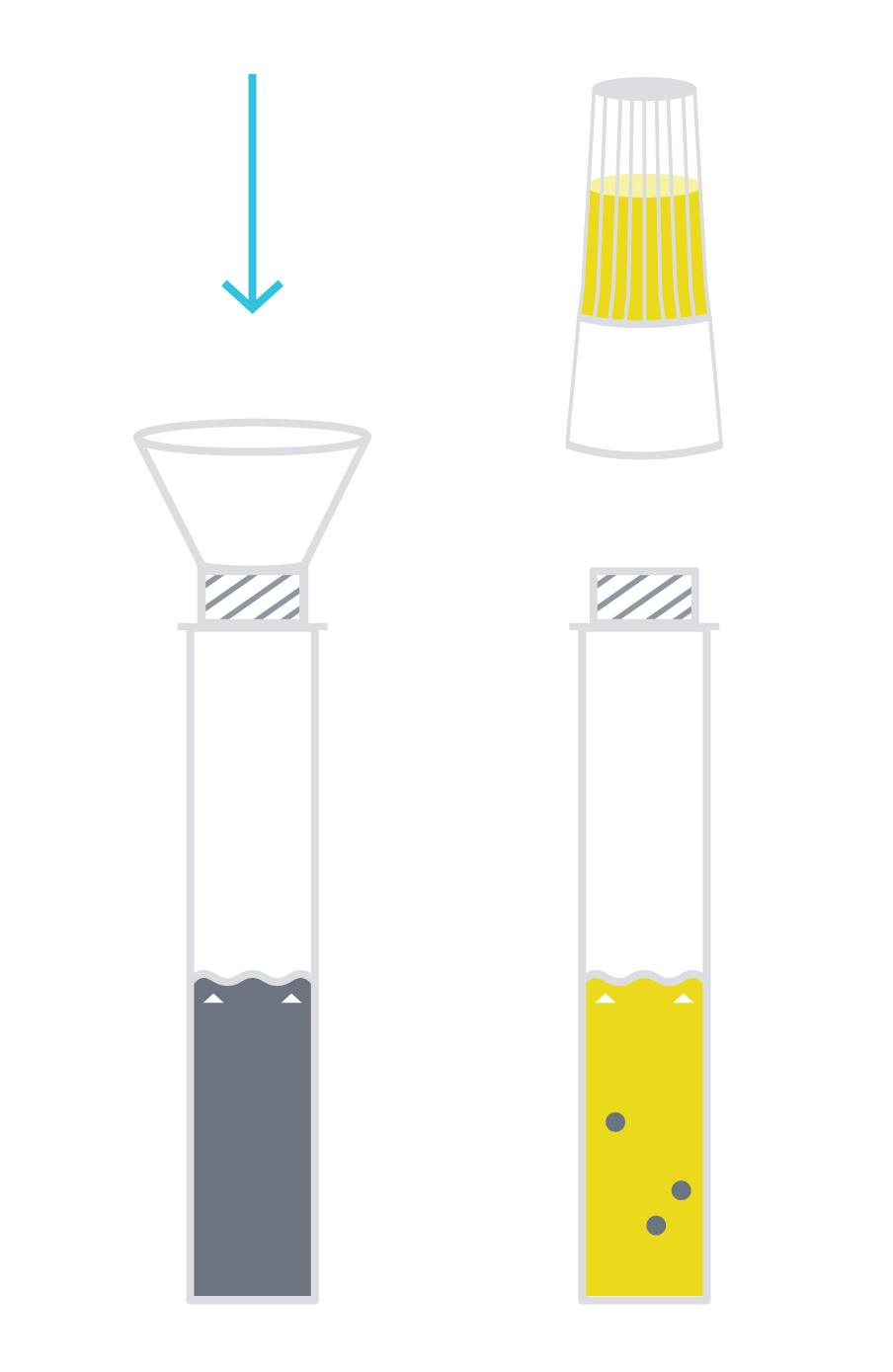
Saliva
Collection
Measures bio-available free testosterone (Free T) levels
Ideal for screening or periodic testing/monitoring or adjusting therapeutic dosing that require multiple collections (after your initial baseline is measured through an initial blood draw)
Saliva collections can be done from your home (or anywhere really) without disrupting your daily schedule
Non-invasive, pain free and stress free, avoiding the stressful impact a blood draw can have on hormone levels
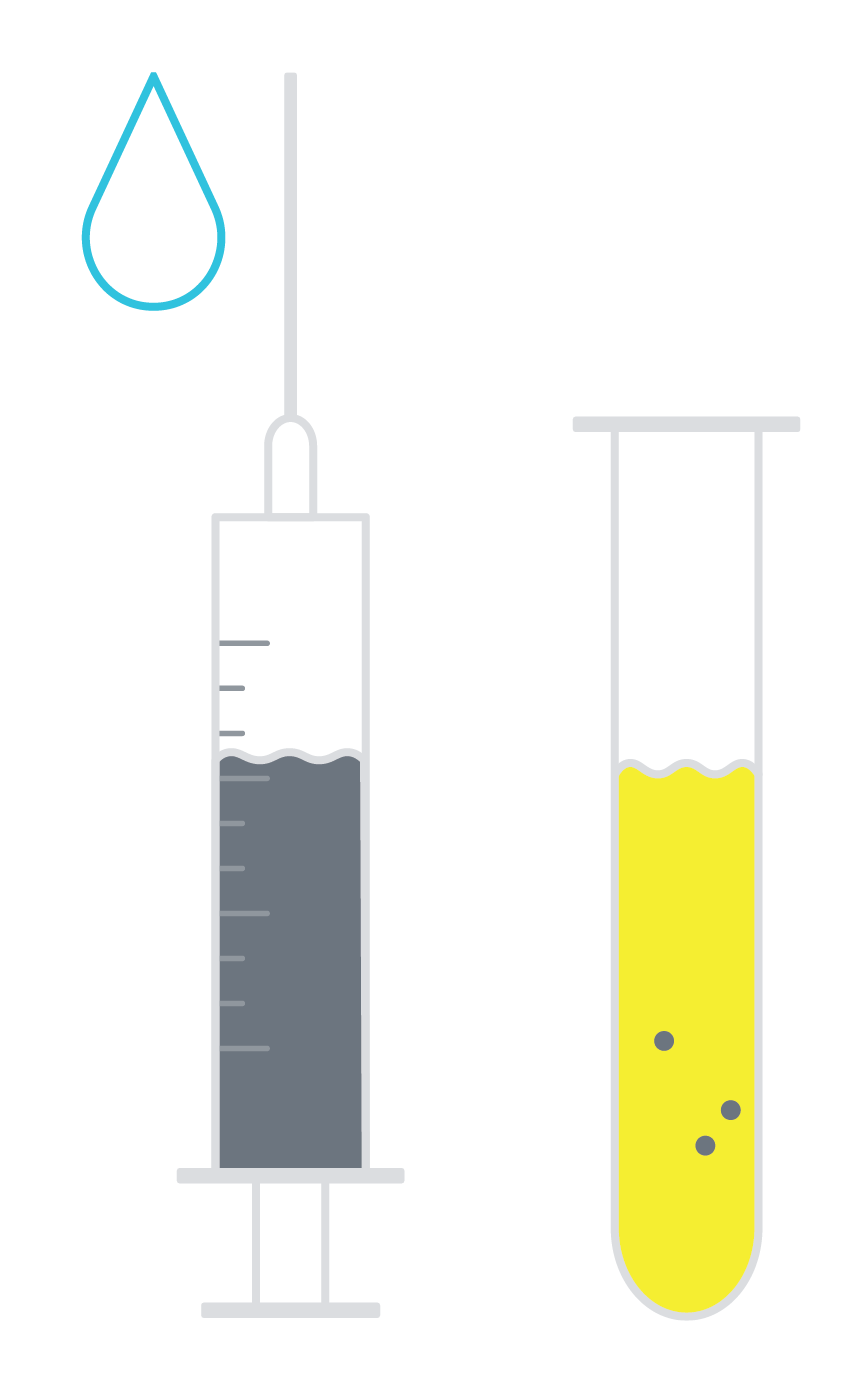
Blood Serum
Collection
Measures total testosterone (Total T) and free testosterone (Free T) levels
Ideal for an in-depth assessment of testosterone levels and offers a baseline level
Blood serum collection is taken by a health care professional from a vein in your arm, using a needle and collected into a test tube or vial
Takes less than 5 minutes, may feel a little sting from the needle, should be taken between 7am and 10am, and usually
How are testosterone levels tested?

Saliva
Collection
Measures bio-available free testosterone (Free T) levels
Ideal for screening or periodic testing/monitoring or adjusting therapeutic dosing that require multiple collections (after your initial baseline is measured through an initial blood draw)
Saliva collections can be done from your home (or anywhere really) without disrupting your daily schedule
Non-invasive, pain free and stress free, avoiding the stressful impact a blood draw can have on hormone levels

Blood Serum
Collection
Measures total testosterone (Total T) and free testosterone (Free T) levels
Ideal for an in-depth assessment of testosterone levels and offers a baseline level
Blood serum collection is taken by a health care professional from a vein in your arm, using a needle and collected into a test tube or vial
Takes less than 5 minutes, may feel a little sting from the needle, should be taken between 7am and 10am, and usually
How are testosterone levels analyzed?
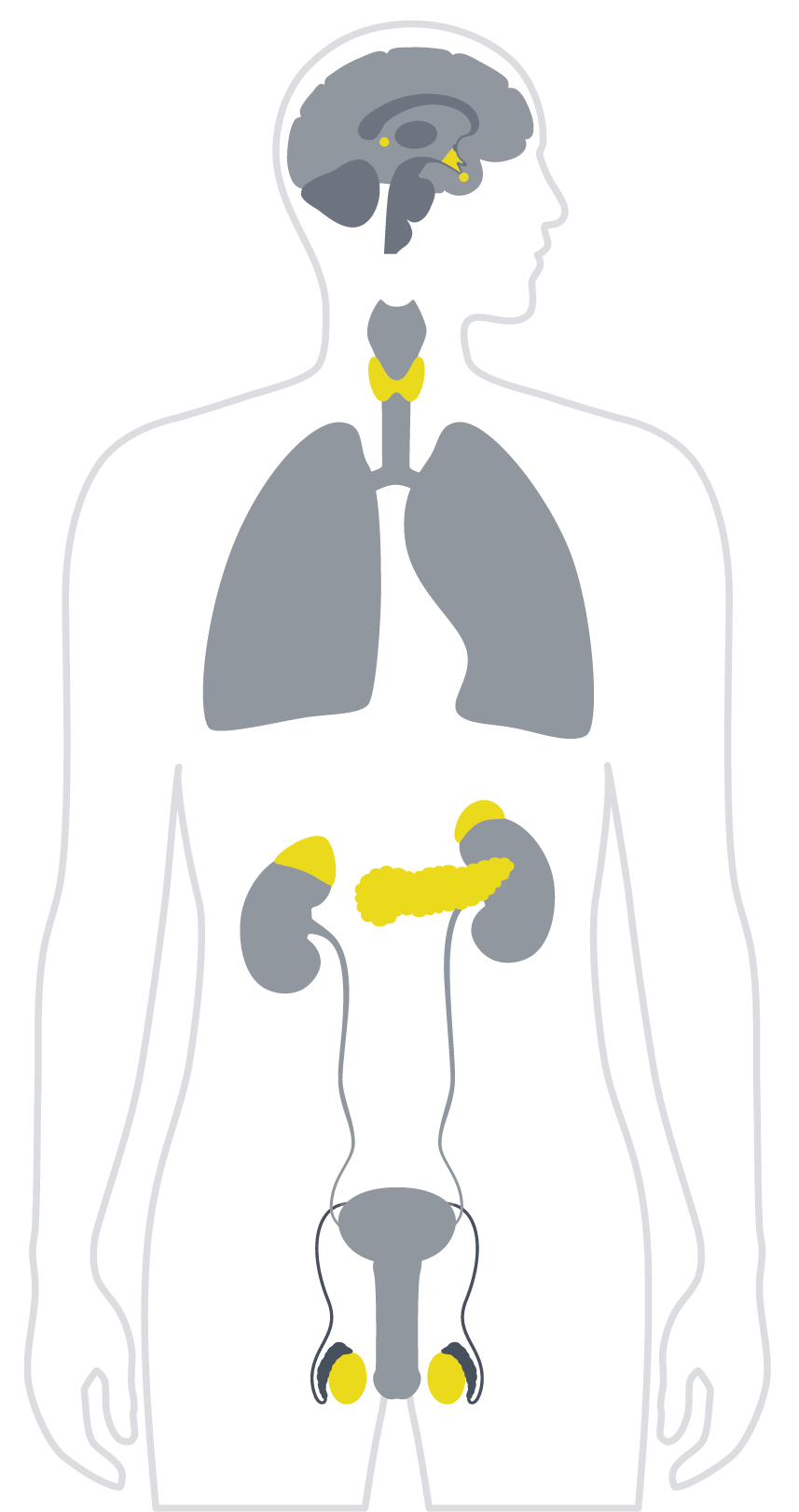
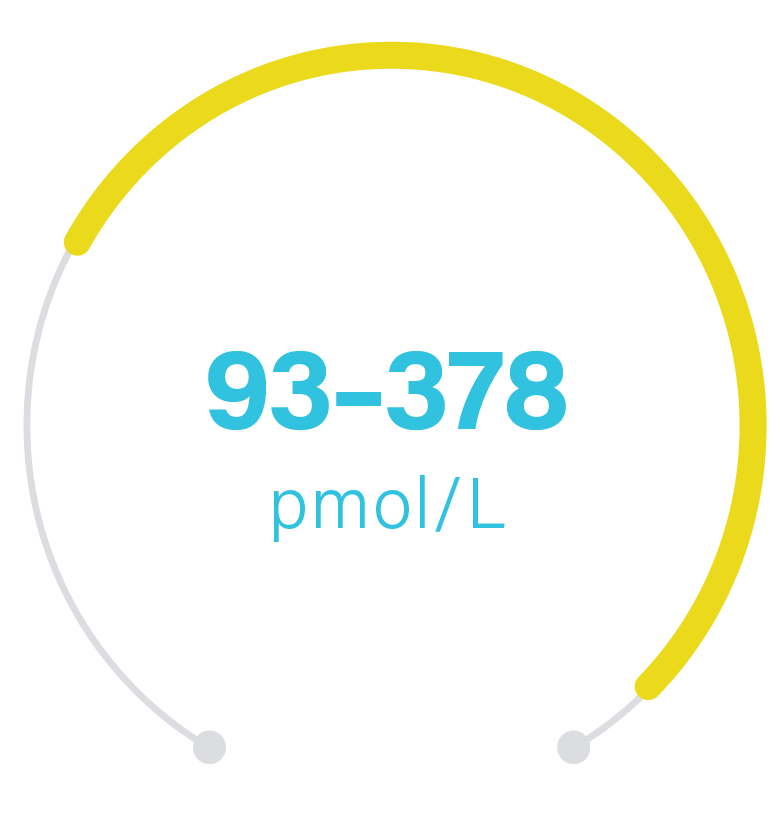
Normal male salivary testosterone levels of 93–378 pmol/L 4

Normal female salivary testosterone levels of 4–46 pmol/L 4
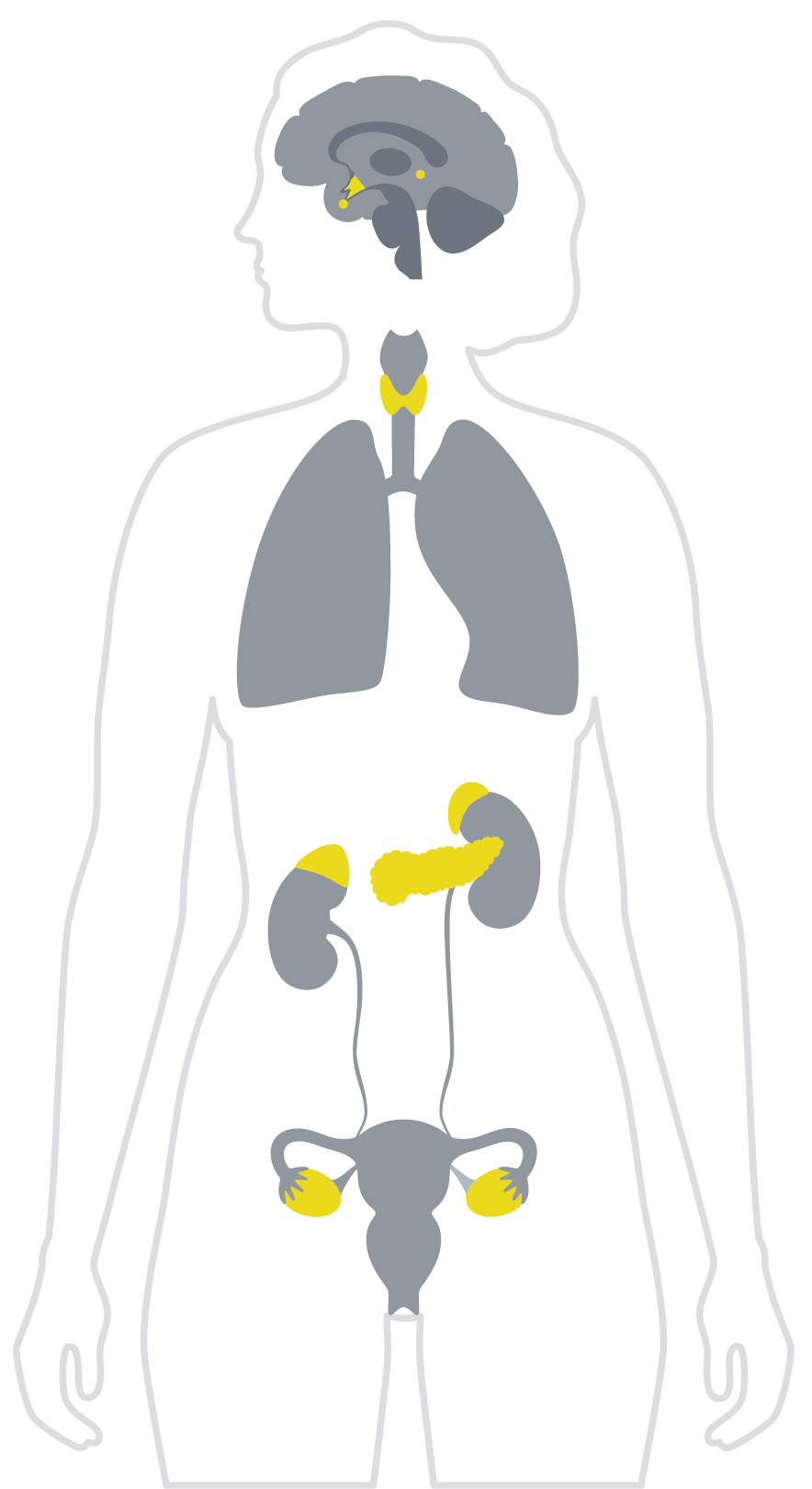
These numbers are highly sensitive to several factors, like age, medication, medical conditions, and the time of day and season when the test is taken. 5
How are testosterone levels analyzed?

Normal male salivary testosterone levels of 93–378 pmol/L 4


Normal female salivary testosterone levels of 5–46 pmol/L 4

These numbers are highly sensitive to several factors, like age, medication, medical conditions, and the time of day and season when the test is taken. 5
Are low levels dangerous?
Testosterone plays an important role in physical and mental health.
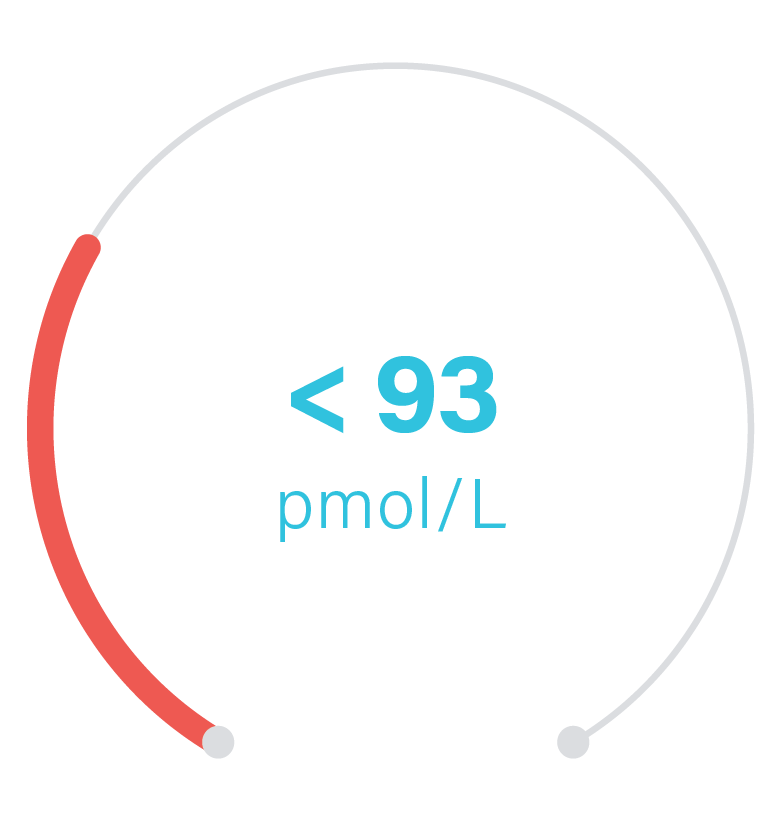
Male salivary testosterone levels
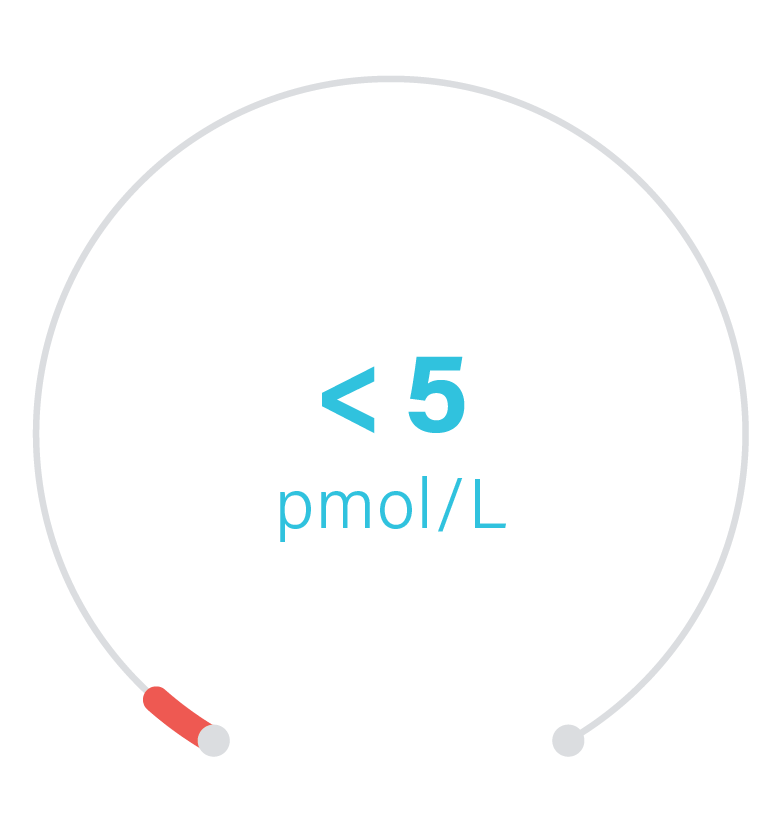
Female salivary testosterone levels
Low levels of testosterone can have various effects, such as weakened bones, higher fat percentage, and reduced muscle strength. It can also cause emotional disturbances, like depression and irritability.3 Testosterone affects sex organs, bone marrow, skin, bones, muscles and the brain.
Are low levels dangerous?
Testosterone plays an important role in physical and mental health.

Male salivary testosterone levels
Female salivary testosterone levels

Low levels of testosterone can have various effects, such as weakened bones, higher fat percentage, and reduced muscle strength. It can also cause emotional disturbances, like depression and irritability.3 Testosterone affects sex organs, bone marrow, skin, bones, muscles and the brain.
Why understand testosterone levels?
It is important for patients to be informed about their testosterone levels. This helps them identify any underlying medical conditions and make informed health choices.7
Why understand testosterone levels?
It is important for patients to be informed about their testosterone levels. This helps them identify any underlying medical conditions and make informed health choices.7
Does the saliva test sample need to be sent in for analysis immediately? Will it need to be stored at a specific temperature?


After collecting a saliva sample using the SimplyTest™ saliva collection kit, testing samples will be preserved and stabilized safely inside the collection device at room temperature for over a 10 days. It is strongly recommended however, to mail samples to the lab for testing the same or next day.
Does the saliva test sample need to be sent in for analysis immediately? Will it need to be stored at a specific temperature?

After collecting a saliva sample using the SimplyTest™ saliva collection kit, testing samples will be preserved and stabilized safely inside the collection device at room temperature for over a 10 days. It is strongly recommended however, to mail samples to the lab for testing the same or next day.

[1] Huo, S., Scialli, A. R., McGarvey, S., Hill, E., Tügertimur, B., Hogenmiller, A., Hirsch, A. I., & Fugh-Berman, A. (2016). Treatment of Men for “Low Testosterone”: A Systematic Review. PLoS One, 11 (9). http://dx.doi.org/10.1371/- journal.pone.0162480[2] 10 Facts Every Man Should Know About Testosterone. Medically Reviewed by UPMC https://share.upmc.com/2021/10/testosterone-facts/#:~:text=Testosterone%20Gives%20You%20Stronger%20Bones,against%20bone%20diseases%20like%20osteoporosis.[3] Morgentaler, A., Traish, A., Hackett, G., Jones, T. H., & Ramasamy, R. (2019). Diagnosis and Treatment of Testosterone Deficiency: Updated Recommendations From the Lisbon 2018 International Consultation for Sexual Medicine.
Sexual medicine reviews, 7(4), 636–649. https://doi.org/10.1016/j.sxmr.2019.06.003[4] Keevil, B. G., MacDonald, P., Macdowall, W., Lee, D. M., Wu, F. C., & NATSAL Team (2014). Salivary testosterone measurement by liquid chromatography tandem mass spectrometry in adult males and females. Annals of clinical biochemistry,
51(Pt 3), 368–378. https://doi.org/10.1177/0004563213506412[5] Paduch, D. A., Brannigan, R. E., Fuchs, E. F., Kim, E. D., Marmar, J. L., & Sandlow, J. I. (2014). The laboratory diagnosis of testosterone deficiency. Urology, 83(5), 980–988. https://doi.org/10.1016/j.urology.2013.12.024[6] Fui, M. N. T., Dupuis, P., & Grossmann, M. (2014). Lowered testosterone in male obesity: Mechanisms, morbidity and management. Asian Journal of Andrology, 16(2), 223-231. https://doi.org/10.4103/1008-682X.122585 Goldman, A. L., Bhasin, S., Wu, F. C. W., Krishna, M., Matsumoto, A. M., & Jasuja, R. (2017). A Reappraisal of Testosterone’s Binding in Circulation: Physiological and Clinical Implications. Endocrine reviews, 38(4), 302–324. https://doi.org/10.1210/er.2017-00025[7] Ho, C. K. (2011). Testosterone testing in adult males. The Malaysian Journal of Pathology, 33(2), 71–81.
FAQ’s
Frequently Asked Questions















